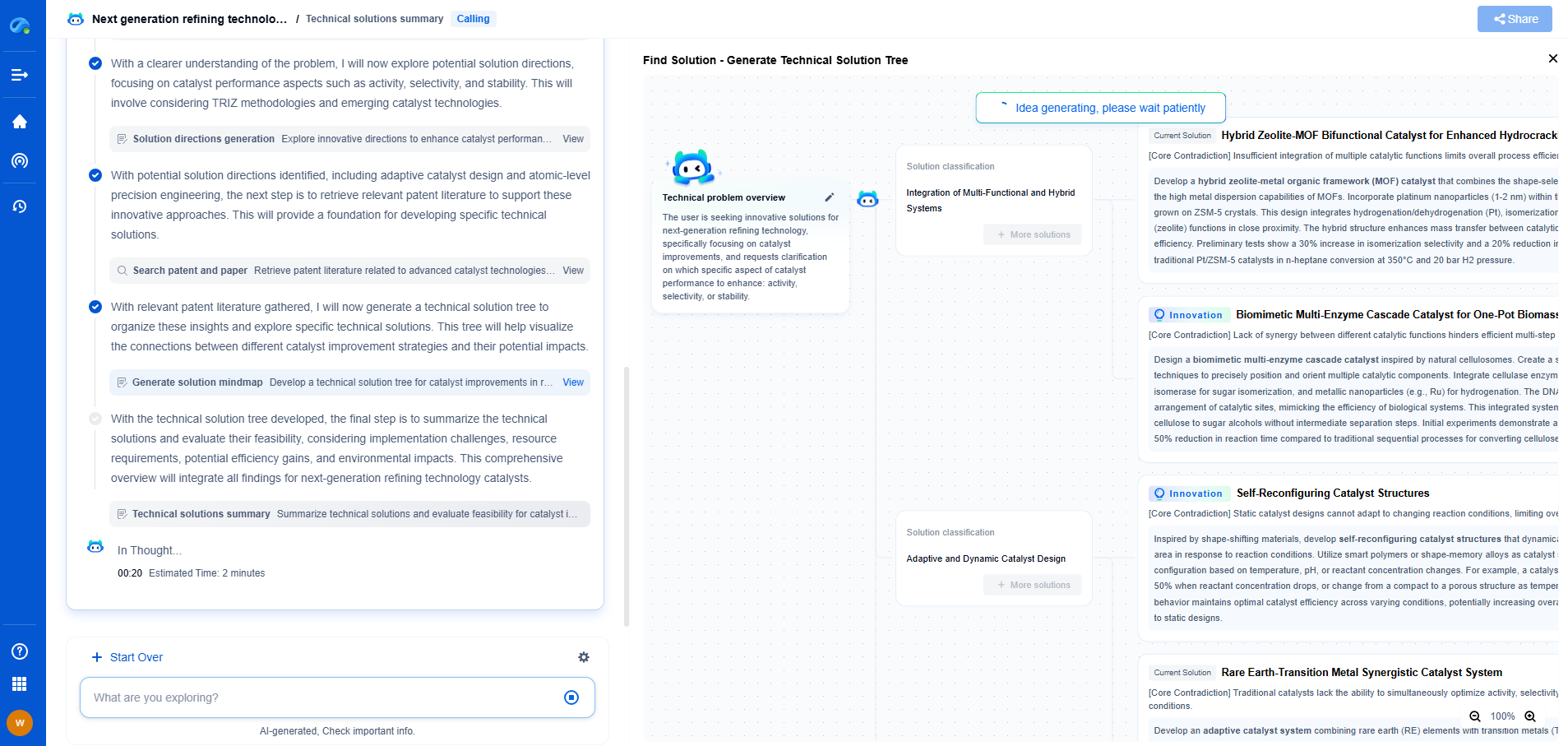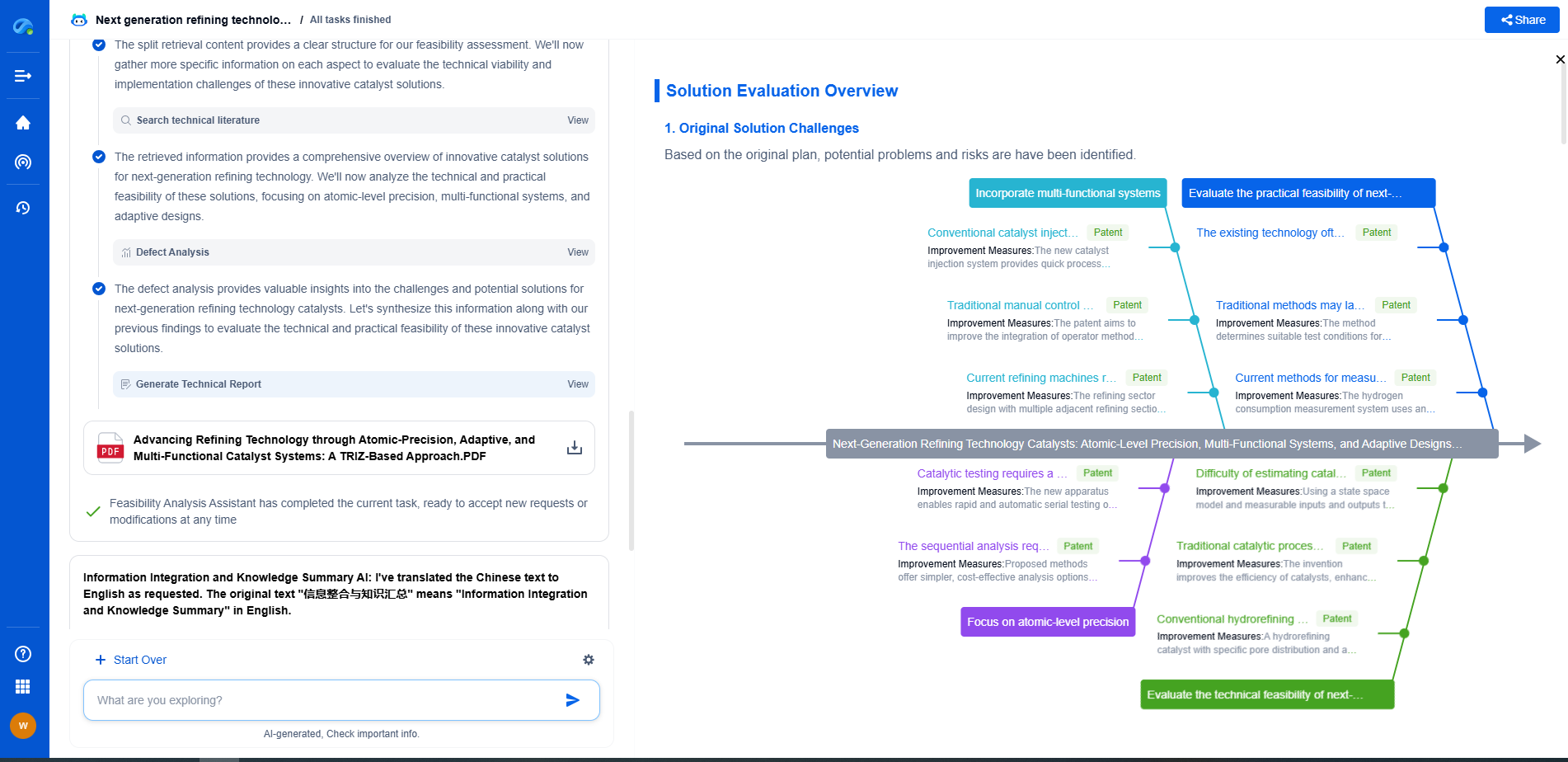Electric vs. Pneumatic Valve Actuators: Pros and Cons
JUN 20, 2025 |
In the world of industrial automation and process control, valve actuators play a crucial role in managing the flow of fluids and gases within a system. Two popular types of valve actuators are electric and pneumatic. Each has its own set of advantages and disadvantages, making the choice between them dependent on specific application requirements. In this article, we will explore the pros and cons of electric and pneumatic valve actuators to help you make an informed decision.
**Understanding Electric Valve Actuators**
Electric valve actuators use electrical energy to operate. They are often chosen for their precision and ease of integration with modern control systems.
**Pros of Electric Valve Actuators**
1. **Precision and Control**: Electric actuators offer excellent precision and control, making them ideal for applications requiring accurate positioning and smooth operation.
2. **Ease of Integration**: These actuators can be easily integrated into automated systems and are compatible with digital control signals, enabling seamless communication with central control systems.
3. **Energy Efficiency**: Electric actuators are generally more energy-efficient than pneumatic ones since they only consume power when operating.
4. **Quiet Operation**: They operate quietly compared to pneumatic actuators, making them suitable for applications where noise is a concern.
**Cons of Electric Valve Actuators**
1. **Initial Cost**: Electric actuators tend to have a higher initial purchase cost compared to pneumatic actuators.
2. **Complexity and Maintenance**: They require more complex electronics and can be more challenging to maintain and repair due to the presence of sensitive components.
3. **Limited Speed**: Electric actuators can be slower than pneumatic ones in response time, which might be a drawback in applications that require rapid actuation.
**Understanding Pneumatic Valve Actuators**
Pneumatic valve actuators use compressed air to operate. They are widely used in industries where reliability and fast response times are crucial.
**Pros of Pneumatic Valve Actuators**
1. **Fast Response Time**: Pneumatic actuators provide rapid actuation, which is beneficial in applications requiring quick valve operation.
2. **Durability and Reliability**: These actuators are known for their robustness and reliability, especially in harsh industrial environments.
3. **Lower Initial Cost**: Generally, pneumatic actuators have a lower initial cost, which can be appealing for budget-conscious projects.
4. **Safety**: In environments where explosive gases or materials are present, pneumatic actuators can be safer since they do not generate sparks.
**Cons of Pneumatic Valve Actuators**
1. **Energy Consumption**: They can be less energy-efficient, as the compressed air system continuously consumes energy.
2. **Maintenance**: Pneumatic systems require regular maintenance of the air supply system to prevent leaks and ensure efficient operation.
3. **Noise Levels**: These actuators can be noisy due to the release of compressed air, which might not be suitable for noise-sensitive environments.
**Choosing the Right Actuator for Your Application**
The decision between electric and pneumatic valve actuators depends on several factors, including the specific requirements of your application, budget constraints, and environmental conditions. Consider the following:
- **Application Requirements**: If precision and digital integration are paramount, an electric actuator might be the better choice. If rapid response and durability are more critical, a pneumatic actuator could be more suitable.
- **Budget**: Analyze both the initial investment and long-term operational costs, including energy consumption and maintenance, to determine the most cost-effective solution.
- **Environment**: Consider the environmental conditions, such as the presence of explosive materials or extreme temperatures, which might influence the suitability of one type over the other.
**Conclusion**
Both electric and pneumatic valve actuators have unique advantages and disadvantages. Understanding these can help you make an informed decision that aligns with your industrial needs. Whether you prioritize precision, speed, cost, or reliability, there is an actuator solution that can meet your requirements. By carefully evaluating your specific application needs, you can select the optimal valve actuator for your system.
Transform the Way You Innovate in Pipeline Technology—with AI-Powered Intelligence
From corrosion-resistant materials to smart monitoring systems and advanced flow control mechanisms, the pipeline industry is undergoing rapid technological transformation. Yet keeping up with evolving engineering solutions, regulatory landscapes, and competitive patents can be a major bottleneck for R&D and IP teams.
Patsnap Eureka is your AI-powered research companion—built specifically for professionals in high-tech and infrastructure domains like pipeline technology. Whether you're designing high-pressure transport systems, assessing trenchless installation innovations, or safeguarding proprietary flow assurance solutions, Eureka provides real-time insights into global patent trends, emerging technologies, and R&D intelligence—all in one intuitive interface.
Empower your team to innovate faster, reduce technical blind spots, and stay ahead of industry shifts. Discover Patsnap Eureka today and bring clarity and confidence to your pipeline technology decisions.
- R&D
- Intellectual Property
- Life Sciences
- Materials
- Tech Scout
- Unparalleled Data Quality
- Higher Quality Content
- 60% Fewer Hallucinations
Browse by: Latest US Patents, China's latest patents, Technical Efficacy Thesaurus, Application Domain, Technology Topic, Popular Technical Reports.
© 2025 PatSnap. All rights reserved.Legal|Privacy policy|Modern Slavery Act Transparency Statement|Sitemap|About US| Contact US: help@patsnap.com

